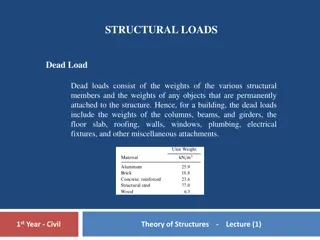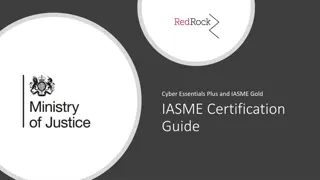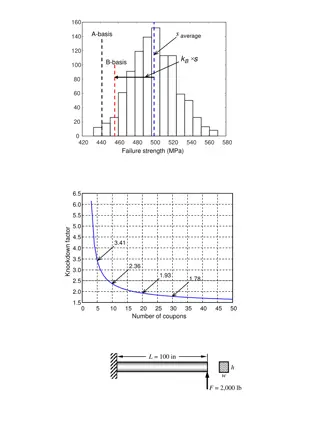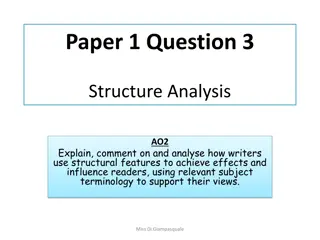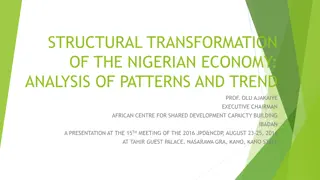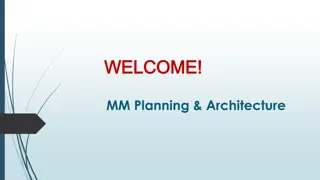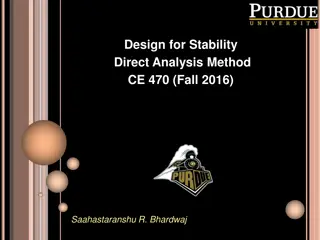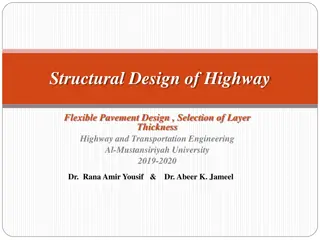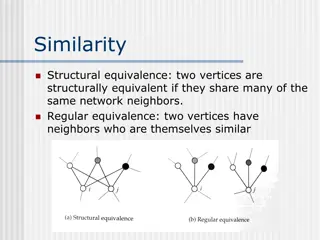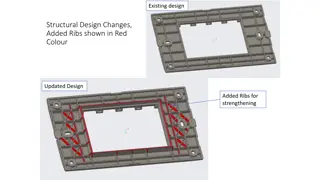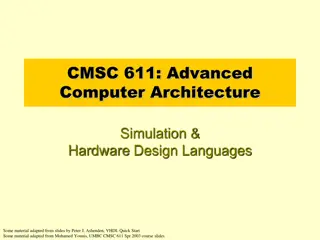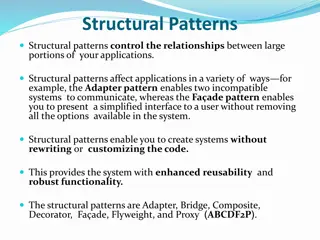Introduction to Eurocodes: Structural Design Essentials
This course covers Eurocodes 1990 and 1991, focusing on structural design essentials such as safety, serviceability, and durability of structures, load assumptions, and reliability analysis. Targeted at students and professionals with a background in structural engineering, the course enables participants to apply engineering models to formulate load assumptions, analyze internal forces for structural design, validate solutions, and develop skills in mechanical modeling and probabilistic approaches towards structural reliability.
Download Presentation

Please find below an Image/Link to download the presentation.
The content on the website is provided AS IS for your information and personal use only. It may not be sold, licensed, or shared on other websites without obtaining consent from the author.If you encounter any issues during the download, it is possible that the publisher has removed the file from their server.
You are allowed to download the files provided on this website for personal or commercial use, subject to the condition that they are used lawfully. All files are the property of their respective owners.
The content on the website is provided AS IS for your information and personal use only. It may not be sold, licensed, or shared on other websites without obtaining consent from the author.
E N D
Presentation Transcript
1. General information about the course 1. General information about the course Title of the course Introduction to Eurocodes 1990 and 1991 Academic Teachers Prof. Dr.-Ing. R diger H ffer Vanessa Bernard, M.Sc. Simon Kosse, M.Sc. Institution Ruhr University Bochum Faculty of Civil and Environmental Engineering Institute of Structural Engineering E-Mail ruediger.hoeffer@rub.de Agreement number 2018 3234 / 001 001 Project reference number 598719-EPP-1-2018-1-MK-EPPKA2-CBHE-JP
2. Contents of the course 2. Contents of the course Eurocode 1990: Basis of structural design - requirements for safety, serviceability and durability of structures, limit states to be investigated, partial safety factors and load combinations to be applied, remarks on reliability analysis and design based on tests Eurocode 1991-1: Actions on structures General actions - Part 1: Densities, self-weight, imposed loads for buildings Part 3: Snow loads Part 4: Wind actions Part 7: Accidental actions Agreement number 2018 3234 / 001 001 Project reference number 598719-EPP-1-2018-1-MK-EPPKA2-CBHE-JP
3. Target group and prerequisites 3. Target group and prerequisites Target group/Learners profile The course offer aims at interested students and professionals who have bachelor s knowledge in the field of structural engineering. Prerequisites (required pre-knowledge and experiences) It is recommended that the interested party carries a Bachelor's degree in civil engineering or has equivalent technical knowledge and practical experiences. Agreement number 2018 3234 / 001 001 Project reference number 598719-EPP-1-2018-1-MK-EPPKA2-CBHE-JP
4. Learning outcomes 4. Learning outcomes Students that participate in the course will be able to choose and apply adequate engineering models to formulate and quantify the load assumptions for general building constructions, prepare the analysis of internal forces and stresses for the purpose of structural design, validate and assess these solutions and the achievable results, analyze loading related design problems of acceptable complexity tailored to the student s study status, identify the main characters of observed real-world ambient and further structural loading and quantify it by statistical descriptions, acquire skills in mechanical modeling of load assumptions and their application as well as in limiting probabilities of structural failure through main combinatorial and probabilistic approaches related to the 1st order reliability concept. Agreement number 2018 3234 / 001 001 Project reference number 598719-EPP-1-2018-1-MK-EPPKA2-CBHE-JP
5. Training and learning methods 5. Training and learning methods e-learning, MOOC: 10 hours of teaching (6 lectures) in the form of video lectures and instructive examples, video lectures are complemented by practical exercises of engineering applications for self-learning (workload of 50 hours), Mandatory for the allocation of one additional credit (1 ECTS) is the participation to a tailored Virtual Exchange program in international learner s groups of ca. 20h-30h previously acquired knowledge will be self-assessed by solving provided projects in group work (see part Virtual Exchange), teacher- student interaction is assured by forum discussions. In the international exchange between the project partners, country-specific and regionally different standard solutions or standard approaches will be got to know and compared regarding the achievable structural safety within the framework of an accompanying Virtual Exchange program. Participation on a voluntary basis and active presentation of a subtask is considered a creditable final examination (see part Virtual Exchange). Agreement number 2018 3234 / 001 001 Project reference number 598719-EPP-1-2018-1-MK-EPPKA2-CBHE-JP
Virtual Exchange Virtual Exchange Virtual exchanges are technology-enabled, sustained, people-to-people education programs. (http://virtualexchangecoalition.org) The implementation of this activity to the All4R&D course program will be generally digital, covers approx. 30h in 4-6 weeks, includes synchronous sessions, builds on mixed (international) student groups who deliver input after their own viewpoint of technical culture to the group work, be mandatory for the allocation of credits (3 ECTS). The teachers and their support teams work together to develop: shared learning outcomes a syllabus for this new international component With a focus on the development of activities that promote: interaction during synchronous sessions collaboration between students Agreement number 2018 3234 / 001 001 Project reference number 598719-EPP-1-2018-1-MK-EPPKA2-CBHE-JP
Example Introduction to Example Introduction to Eurocodes The requirements for building constructions as well as for building safety and reliability vary from country to country for societal, climatic, historical or other reasons. By designing a component of a chosen building in mixed, international teams the learners get to know different building codes, their national application and technical cultures. At the same time students gain valuable experience in working in international project teams with diverse technical cultures. Eurocodes 1990 and 1991 1990 and 1991 Additional learning outcomes internationalisation of engineering work inherent training of project management skills active training of specific technical English Course procedure (online meetings, e.g. via Zoom or Skype) introductory event: procedures and matter of technical considerations self-organized group meetings weekly, moderated synchronous sessions in addition to already delivered asynchronous teaching through podcasts synchronous closing event with conclusions presented by the learner s groups Agreement number 2018 3234 / 001 001 Project reference number 598719-EPP-1-2018-1-MK-EPPKA2-CBHE-JP



